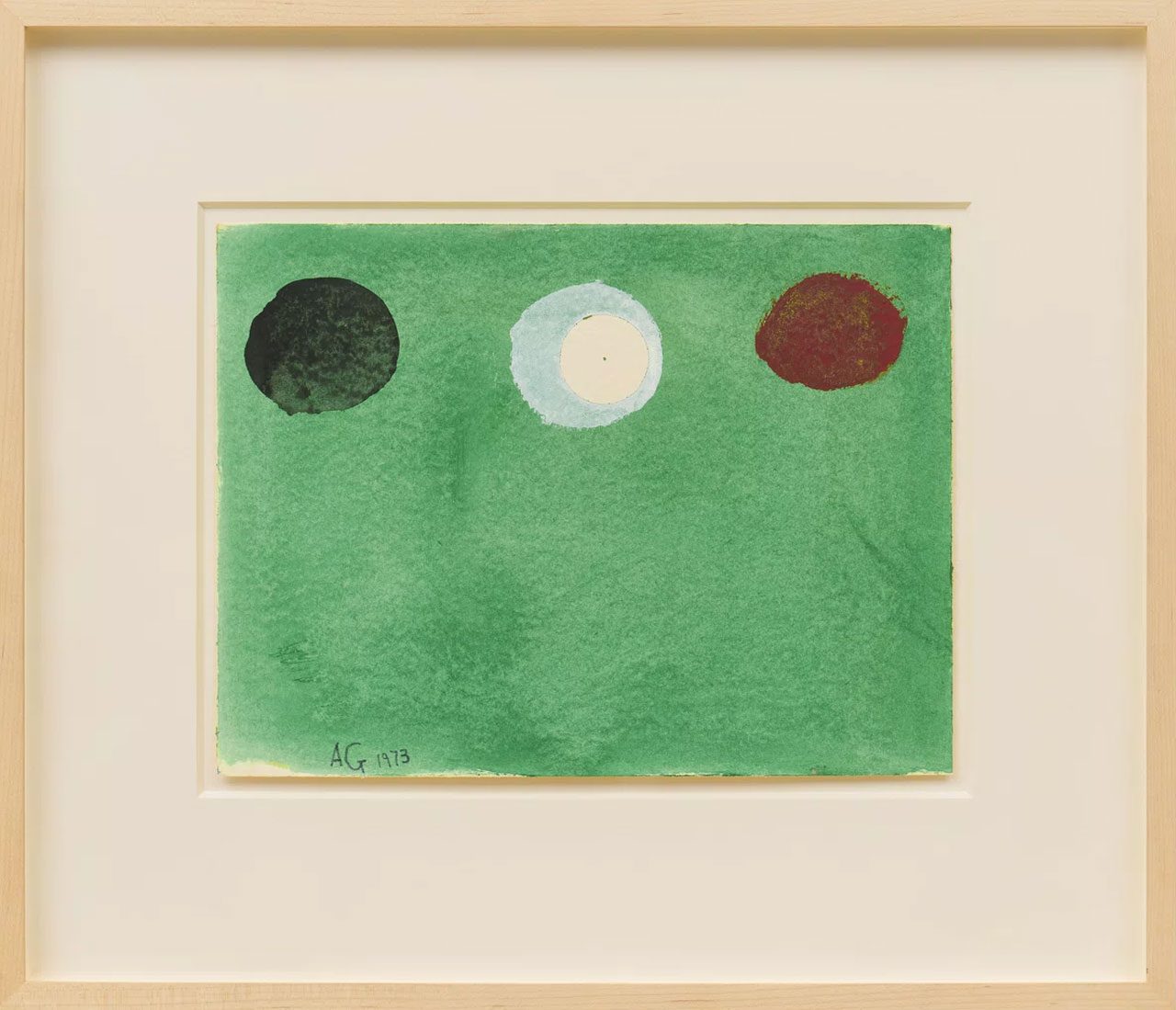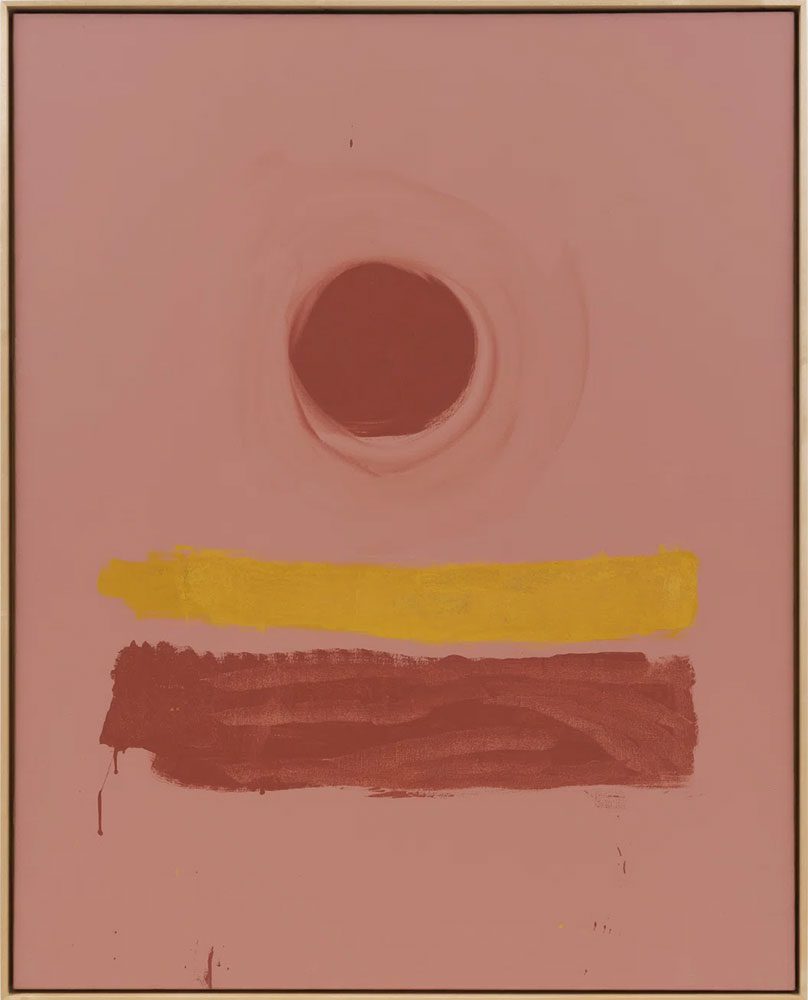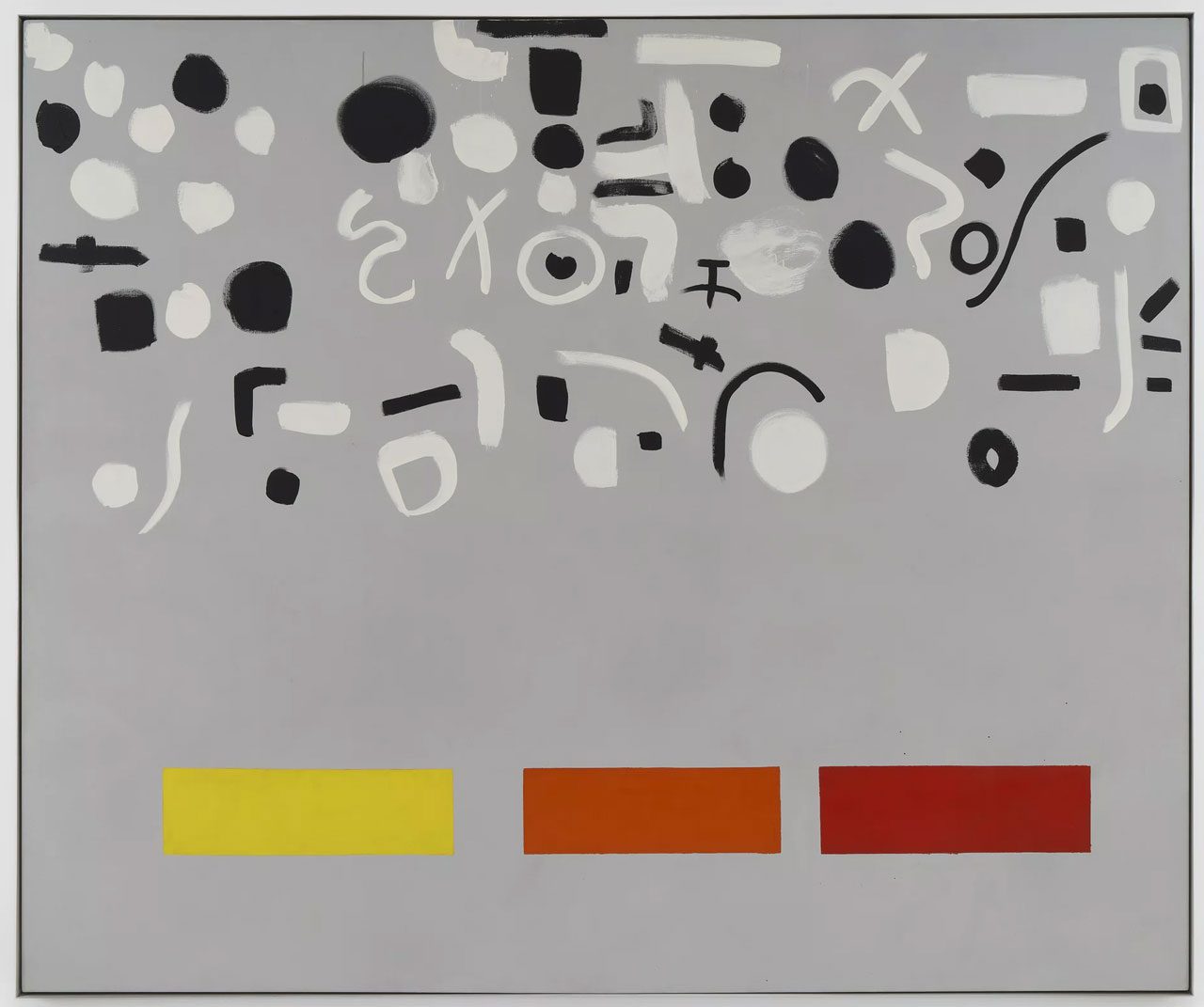ART CITIES:N.York-Adolph Gottlieb
 Growing up during the Depression and maturing throughout the interwar period and the rise of Hitler, American painter Adolph Gottlieb staunchly defended the art of the Abstract Expressionism for its ability to express authentic feeling in the face of the trauma of World War II. The themes of Gottlieb’s paintings over the course of more than three decades still help us come to terms with both the difficulties – such as evil, war, violence, and ignorance – that we as humans encounter, as well as moments of the sublime aspiration and realization.
Growing up during the Depression and maturing throughout the interwar period and the rise of Hitler, American painter Adolph Gottlieb staunchly defended the art of the Abstract Expressionism for its ability to express authentic feeling in the face of the trauma of World War II. The themes of Gottlieb’s paintings over the course of more than three decades still help us come to terms with both the difficulties – such as evil, war, violence, and ignorance – that we as humans encounter, as well as moments of the sublime aspiration and realization.
By Dimitris Lempesis
Photo: Pace Gallery Archive

The exhibition “Vital Images” focuses on paintings created by Adolph Gottlieb in the final years of his life. Holistically, and reveals the intense ambition and formal refinement that motivated Gottlieb’s practice in the late 1960s and early 1970s. The exhibition takes its title from a 1972 interview with the artist, published in The New York Times on the occasion of his last gallery show, which was mounted at Marlborough Gallery. “They are vital images to me,” Gottlieb said of his work. “I continue to project them as I feel them”. “Vital Images” focus on how Gottlieb’s lifelong explorations of abstraction and its capabilities evolved during the later years of his life and career. Following a 1968 exhibition that filled both the Guggenheim and Whitney museums, he began to explore sculpture for the first time. A stroke he suffered in 1971 left him with only the use of his right arm and put him face-to-face with an existential challenge that he embraced as a means to move forward. Aware that his time was limited, Gottlieb set out to expand and refine the ideas about abstraction that he’d been developing for over 50 years. Equipped with his vision and imagination, he saw art as a life-giving force, a source of renewal as he sharpened his focus and advanced the practice that defined his life. Gottlieb produced his largest-ever canvas, “Triptych”, a rarely exhibited three-panel composition, in 1971. This monumental composition is presented in conversation with paintings and works on paper dating between 1970 and 1973. The exhibition also include “Oval Slanted”, a rare polychrome steel sculpture from 1968, in which the artist took up new experimentations with his visual vocabulary in three dimensional terms. Together, these late works reflect Gottlieb’s life-long practice of creating images and exploring and re-thinking them over time, assessing his process and progress time and again. Gottlieb’s first teachers were among the best-known American painters of their generation. At the Art Students League he listened to lectures by the influential Robert Henri; he also studied drawing with painter John Sloan, a central figure of the Ashcan School that advocated the realistic depiction of gritty New York over traditional American Impressionism, and The Eight, a crossover group formed to strengthen the advance of modern art. Gottlieb departed New York in 1921 to study art in Paris, earning his passage by working aboard a steamer bound for France. In Paris, Gottlieb immersed himself in both classical and modern art traditions: he visited the Louvre almost every day was also exposed to Fauvism and Cubism. Too poor to come up with tuition money, he attended the open life-drawing classes at the Academie de la Grande Chaumiere until, not in possession of a visa, he was forced to leave France. Gottlieb then traveled widely throughout Germany and Austria, as well as Holland, Belgium, Italy, and Prague, before returning to New York in 1922 to finish his studies at Parsons and Cooper Union.
In 1923 he met the Ukrainian artist and critic John Graham through the Art Students League. Gottlieb’s exposure to Europe’s avant-garde convinced him that American painting was in comparison provincial and stagnant, and he strove to incorporate what he had learned abroad into a new style. The artist painted throughout the 1920s and also taught art classes to supplement his income.. In 1933 the artist changed the spelling of his first name Adolf to Adolph in protest against Hitler’s election to Chancellor of Germany. In 1935 Gottlieb and Mark Rothko became founding members of The Ten, a group that protested the realism of American painting. That same year, Gottlieb and his wife went back to Europe, making a special trip to Belgium to view artifacts from the Belgian Congo. Returning home, Gottlieb became part of the Easel Painting division of the Works Progress Administration, but because of his wife’s ill health, the couple moved to Arizona in 1937, returning to New York the following year. Gottlieb began painting his “Pictograph” paintings in 1941. In 1943 he and Rothko drafted a letter to the New York Times that outlined the position of Abstract Expressionism for the first time. Gottlieb persisted as a leader in the arts community, becoming a founding member of the New York Artists, Painters, and Abstractionists group and President of the Federation of Modern Painters and Sculptors in 1943-44. He delivered talks at the Museum of Modern Art and the Art Students League in 1948-49, and in 1950 organized a protest of the Metropolitan Museum’s juried selection of contemporary art, arguing that the jurors ignored the true American avant-garde in favor of what he considered antiquated realism. In commemoration of their protest, Gottlieb and fourteen major painters of the New York School posed for a now iconic photograph by Nina Leen, and were dubbed “the Irascibles.” Gottlieb’s series of “Imaginary Landscape Paintings” began in 1951, followed by the first of his “Burst” paintings in 1954. Three years later he started teaching at the Pratt Institute of Design and the Jewish Museum mounted a retrospective exhibition of his work. In 1958 he taught at the University of California and, in an important gesture, the Museum of Modern Art included his work in a show entitled “The New American Painting,” which then toured Europe, introducing the work of the American Abstract Expressionists to audiences abroad. Gottlieb continued to be active in the arts community into the next decade, appointed to the Art Commission, City of New York in 1967. Gottlieb’s reputation was cemented during this period by numerous international exhibitions and a major double retrospective in 1968 at the Whitney and the Guggenheim. Gottlieb suffered a stroke in 1970, and was confined to a wheelchair. His left side was paralyzed but he continued to paint . He was elected to the National Institute of Arts and Letters in 1971, and finally in 1973 began a series of monotypes that he worked on until two weeks before his death on March 4, 1974.
Photo: Adolph Gottlieb, Untitled, 1973, acrylic on paper, 12″ × 9″ (30.5 cm × 22.9 cm), © 2024 The Adolph & Esther Gottlieb Foundation / Artists Rights Society (ARS), New York, Courtesy The Adolph & Esther Gottlieb Foundation and Pace Gallery
Info: Pace Gallery, 540 West 25th Street, New York, NY, USA, Duration: 15/11-21/12/2024, Days & Hours: Tue-Sat 10:00-18:00, www.pacegallery.com/



